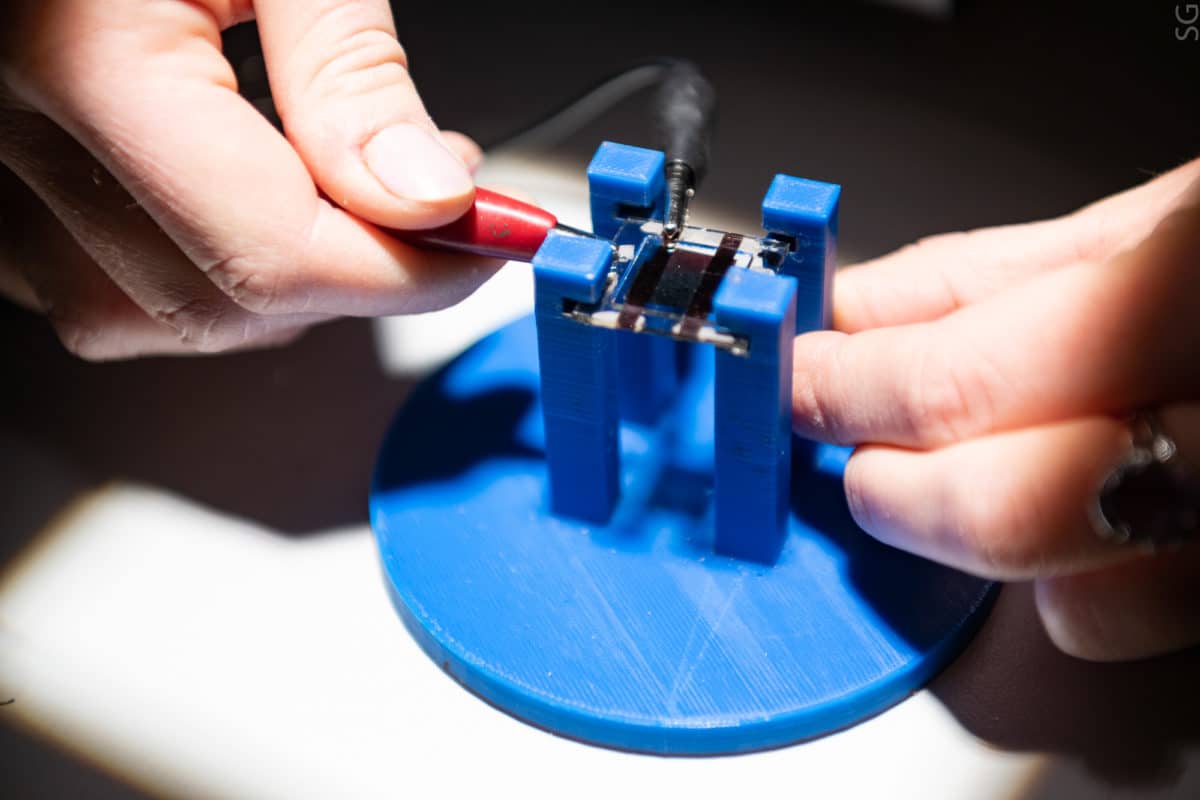Scientists from Russia's National University of Science and Technology (MISiS) and Italy's Tor Vergata University have increased the efficiency of an inverted perovskite solar cell by around 2%, via the use of two-dimensional titanium carbides with high electrical conductivity.
The researchers used MXenes, which is a new family of two-dimensional transition metal carbides. These compounds, which take their name from their graphene-like morphology, are made via selective etching of certain atomic layers from a bulk crystal known as MAX.
“The addition of a small amount of titanium carbide-based MXenes to light-absorbing perovskite layers improves the electronic transport process and optimizes the performance of the solar cell,” the researchers said.
The scientists applied the technique to a perovskite cell with an inverted configuration (p–i–n), based on a nickel(II) oxide (NiO) hole transporting layer. The reference cell initially had a power conversion efficiency of around 17%.
The addition of MXenes as a doping agent allowed the scientists to tune the energy level alignment at the interfaces between the perovskite layer and the charge transporting layer. At the same time, this helped to passivate trap states within the cell structure, resulting in improved charge extraction and collection at the electrodes.
“We demonstrate a useful role of MXenes doping both for the photoactive layer (perovskite) and for the electron transport layer (fullerenes) in the structure of solar cells based on nickel oxide,” said researcher Anastasia Yakusheva. “On the one hand, the addition of MXenes helps to align the energy levels at the perovskite/fullerene interface, and, on the other hand, it helps to control the concentration of defects in the thin-film device, and improves the collection of photocurrent.”
The cell doped with the compound showed an improved efficiency of 19.2%, the Russian-Italian group said. They described the doping technique in “Transition metal carbides (MXenes) for efficient NiO-based inverted perovskite solar cells,” which was recently published in Nano Energy.
This content is protected by copyright and may not be reused. If you want to cooperate with us and would like to reuse some of our content, please contact: editors@pv-magazine.com.




2 comments
By submitting this form you agree to pv magazine using your data for the purposes of publishing your comment.
Your personal data will only be disclosed or otherwise transmitted to third parties for the purposes of spam filtering or if this is necessary for technical maintenance of the website. Any other transfer to third parties will not take place unless this is justified on the basis of applicable data protection regulations or if pv magazine is legally obliged to do so.
You may revoke this consent at any time with effect for the future, in which case your personal data will be deleted immediately. Otherwise, your data will be deleted if pv magazine has processed your request or the purpose of data storage is fulfilled.
Further information on data privacy can be found in our Data Protection Policy.